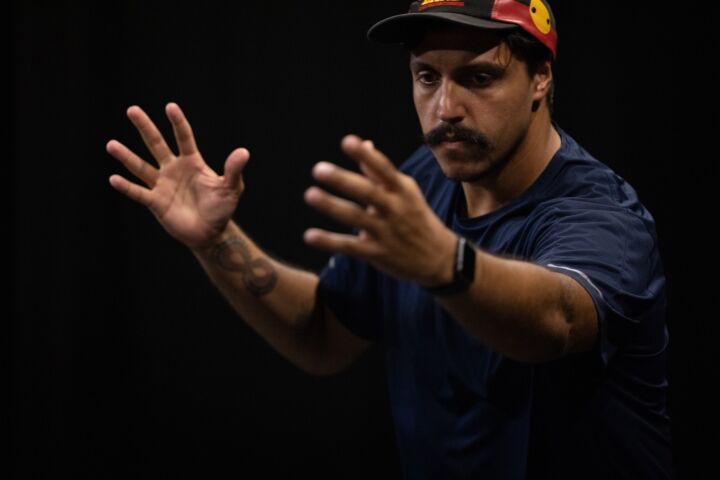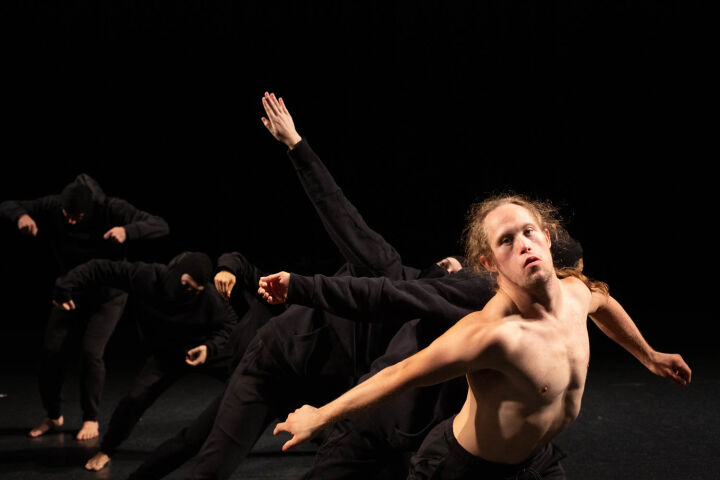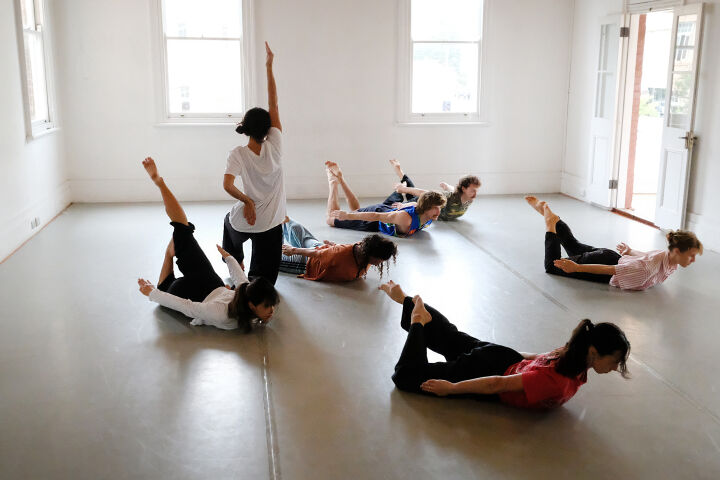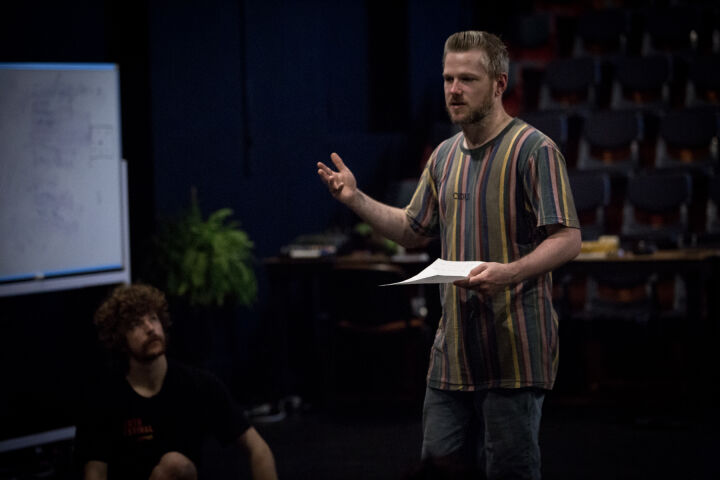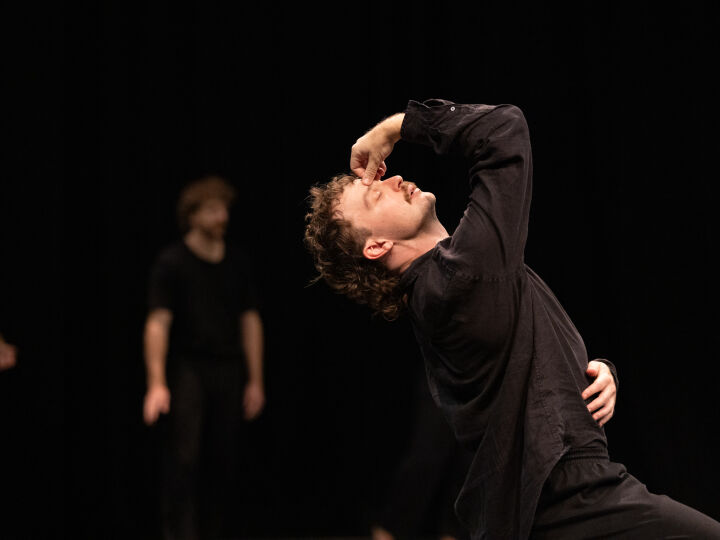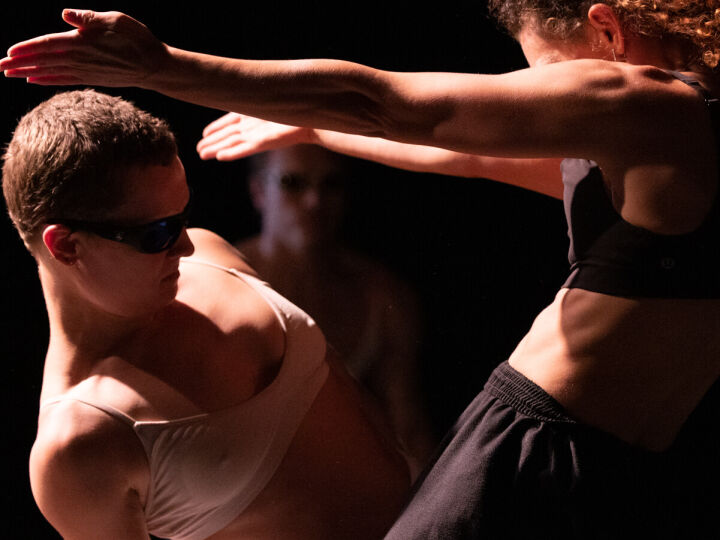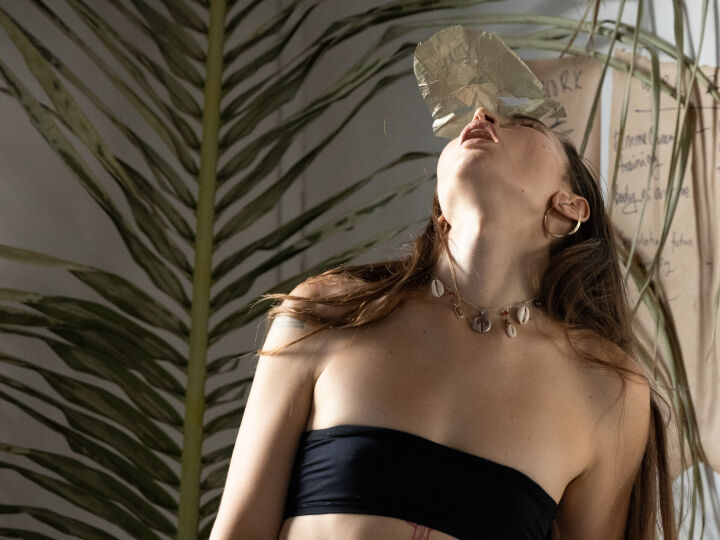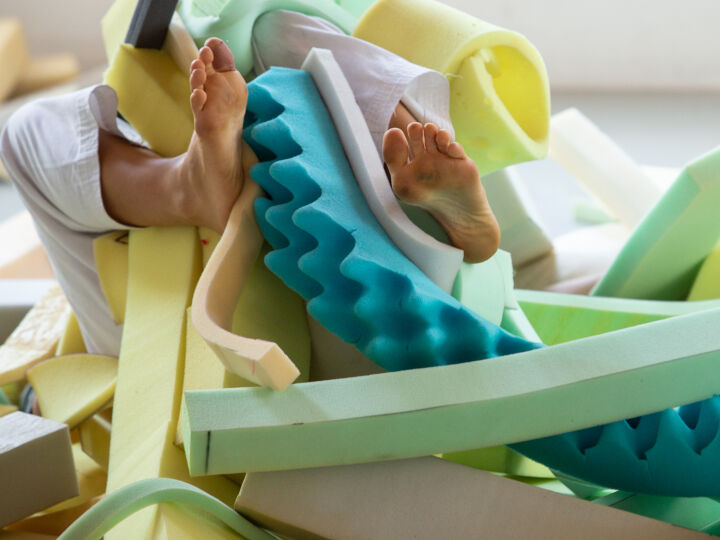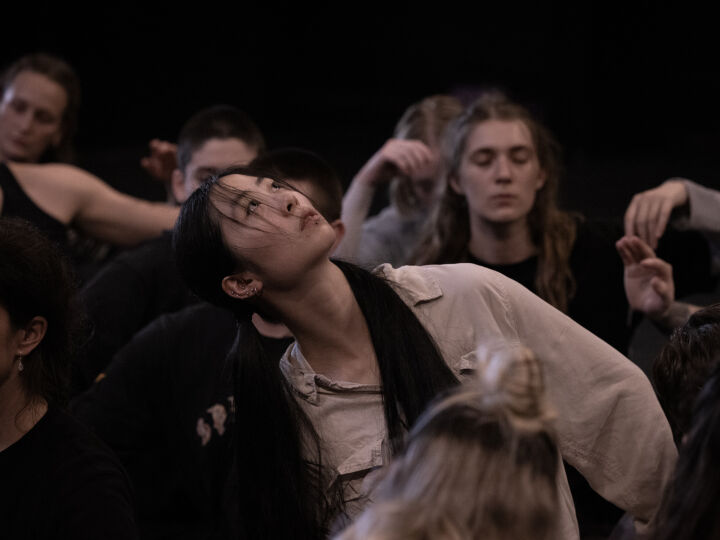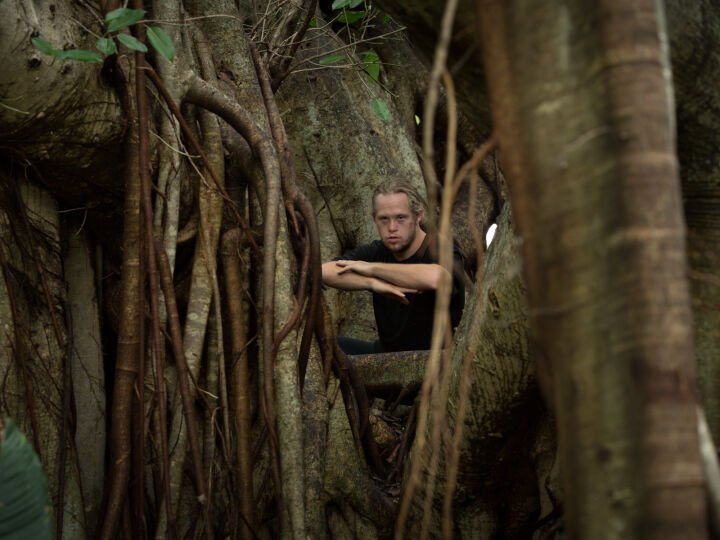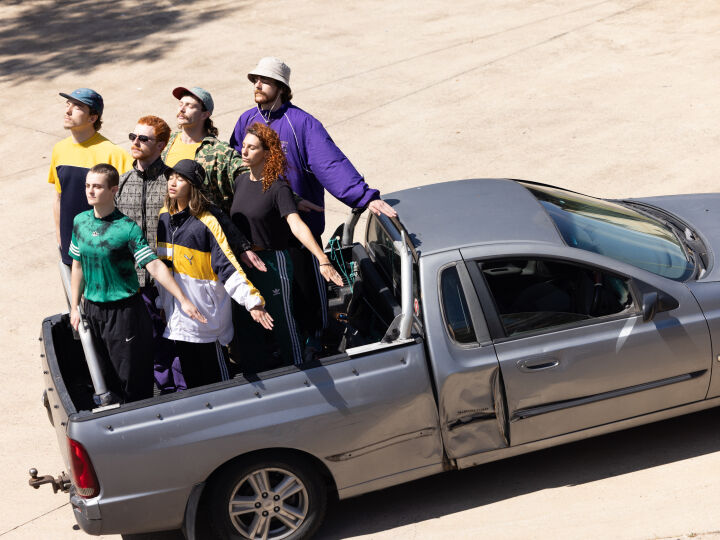No Show | 2020
Alisdair Macindoe

For the last 14 years, I have worked predominantly as a collaborator in these capacities, working on pieces created by established and emerging choreographers. During this time I have worked on over 40 new dance shows and gained valuable insight into the many different ways to create and develop new dance pieces. Recently I have begun to shift my focus towards the creation of new dance work as the lead artist/director/choreographer. This shift of focus has led me to a creative period of reflection on my experience as a collaborator, as a means to develop new ways to create work that is in conversation with my history as a collaborator.
As a multidisciplinary artist, I have a general interest in the intersection of my various artistic practices. Currently, I am particularly interested in the relationship of computer code and the performing body. In 2018 I created a robotic musical installation work called Noncompete, which created a computer-generated acoustic piece of music that was 6 weeks long and performed in 6 rooms by hand-made robotic instruments with thousands of moving parts. This work spurred an interest in the idea that I could investigate creating systems for automated choreography, as opposed to music that communicated choreographic and improvisational scores to performers that were generated by a computer program.
In 2019 as part of my Resident Directorship at Lucy Guerin Inc, I spent two weeks with a group of 9 intern dancers to test a system for said choreographic automation, which I called AID (artificially intelligent dances). AID uses context-free grammar maps written in Backus Naur form, with additional functionality that I developed to generate sentences that are spoken using text-to-voice (computer voice), to guide performers through a performance. Put simply, AID is a computer program that creates sentences, and then says them out loud to a group of performers. This early-stage experiment confirmed for me that the idea had legs and was worthy of further investigation and development.
Later in 2019, I presented this experiment with the Victorian College of the Arts Dance School through a commission to create a short performance for the graduating class. Reflecting on the outcome of this presentation then led me to a place where again, I felt the idea was interesting but warranted further investigation and development, in order to reach a level of creative complexity and depth that justified presenting the idea as a bigger work of substantial creative significance.

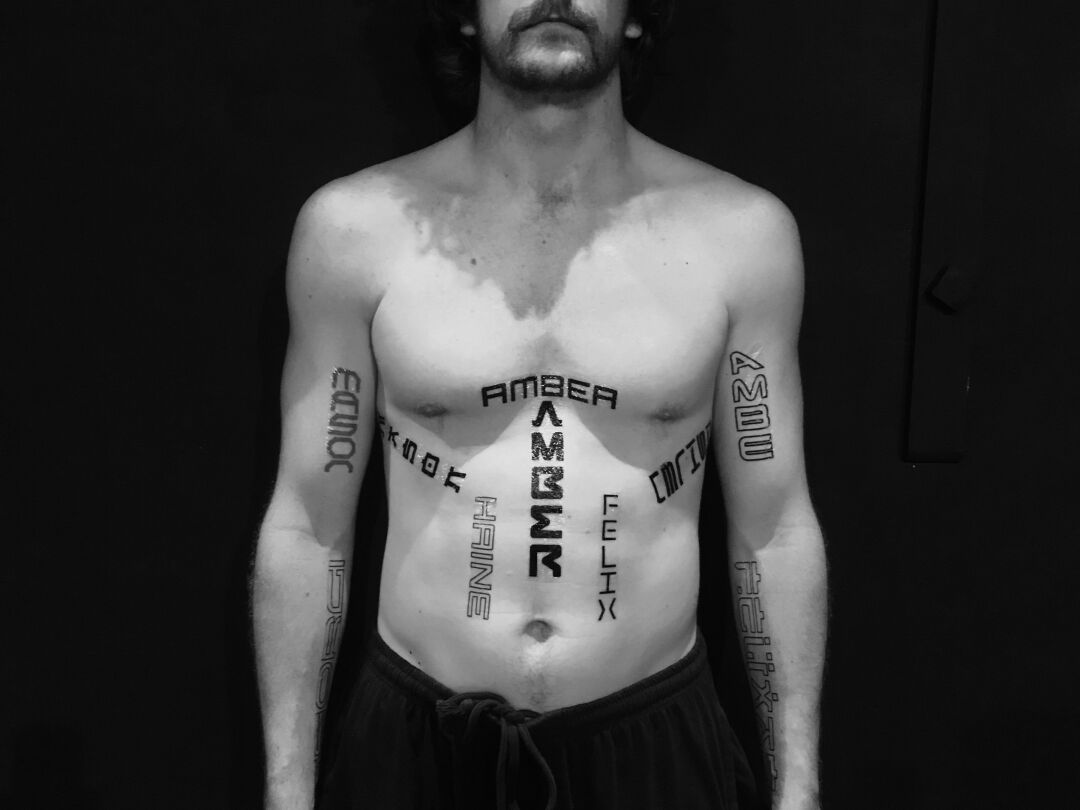

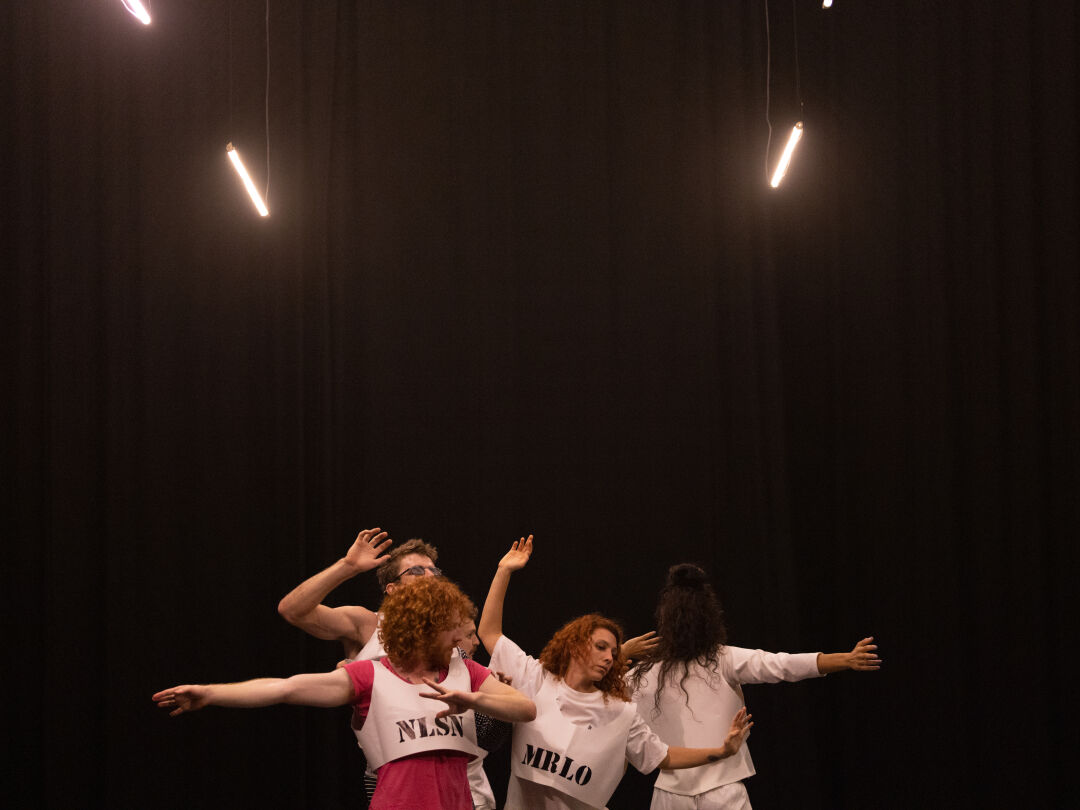


THE PROPOSAL
In late 2019 I was contacted by Dancenorth about the No Show program. I was asked to propose an idea that I could investigate with the company dancers that had a strong focus on practise development, innovation, and queries into dance making, and yet also had open-ended and non-outcome focused methods and systems. There was, to me, a really clear parallel with the AID system, so I proposed to develop the system in collaboration with the company.
As the time drew closer to the No Show period I started to think about ways to bring this system, or method, into the company structure and the context of the company’s culture and practice. I settled on some objectives and intentions. My interests centred on the development of code that could mimic and create larger dance work ideas in a theatre setting, while also dictating form, structure and production elements. I wanted to find ways to represent a choreographer's creative process of envisioning an entire dance work, in the form of code.
THE RESIDENCY
I broke the three week residency period into three areas of focus…
One
Week one was focussed on looking at how the dancers articulate and communicate dance concepts in the form of sentences and paragraphs. For this period, we experimented with developing scores and dance situations that we documented in written form, and then tried to prescribe these ideas into context free grammar, which could then be used to generate variations and new versions of the scores and ideas.
What was interesting here, was the large variety of grammar used to purvey interpretive intention. Something I had really overlooked in my previous investigations.
We talked with a lot of depth and detail about what could be disseminated through grammatical structure, and the inferences of subjectivity and objectivity, affecting the performative body and psychology. These took the form of investigations about difference between the computer saying; "Go to the corner", and "you are feeling a physical attraction to the corner", and "a force is pulling you slowly towards the corner", and "the corner is awaiting your physicality", and "they are all heading towards the corner", and "find your way to the corner". These phrases all have a similar directives, but through discussions with the dancers and trial of the system, we began to uncover the effects the differences have on the performance scenario, and how they affect both the psychology of the performers, and the mood and focus of the performance itself.
Two
Week two we looked into how to implement larger structures, or sections, with all of the information and generators developed in week one. This started a reflection on how the system, as it is exposed to the viewer through the sound system, is also a computer monologue and forms a substantial part of the meaning or transgression throughout the performance situation. We also started to develop bigger dramaturgical ideas, like hiding the system from the viewer by using earpieces, and nominating the program to make bigger decisions like the order of the new sections, and decisions about what the dancers are wearing.
Three
Week three was all about running and re running the system as a discrete 45 minute practise, and reviewing and practising how to collaborate with system inside a decided length of time, framed as a part practise part performance. This resulted in a public showing that happened on the final Thursday, to an audience of over 100 guests, which gave us a chance to reflect on the system in a real performance scenario.
CONCLUSION
The 2020 No Show program supported a deep and focused investigation into human computer performance situations.
Working collaboratively with the exceptional Dancenorth team, this investigation unveiled and revealed unpredictable and extremely valuable information that will contribute to the development of my ongoing choreographic/programmatic practice. As I continue to develop my choreographic/programmatic practice, I now have a clear understanding of its potential, and the direction I am interested in taking it.
This was an invaluable step, and one that I believe will impact my creative development for years to come, and also feed the development of works that will lead to significant future presentations and contributions to the Australian contemporary dance sector.
